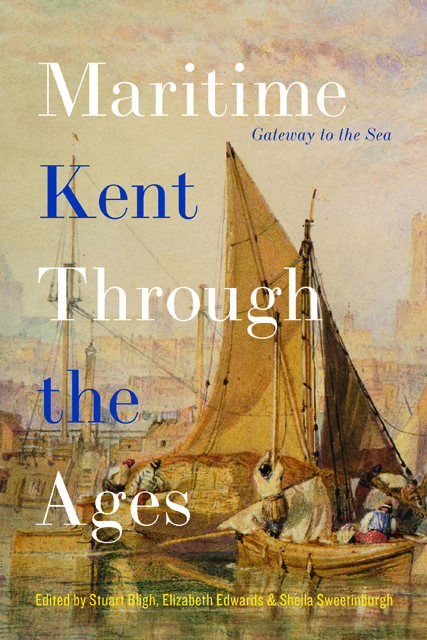15 - A Rich Diversity: Modern Kent Coastal Communities
Published online by Cambridge University Press: 20 December 2023
Summary
On the first Ordnance Survey Map of 1801 the coastal communities of Kent were very much still small, seaward, estuarine or riverine looking and working. Starting with the London boroughs still within the administrative and political county of Kent, Deptford, then the largest town in the county, was a countryside away from the smaller London communities of Rotherhithe and Peckham, and from Lewisham on the very edge of Kent. Woolwich was primarily an important naval dockyard with its ancillary works and services, and the next coastal village was several miles downstream at Erith, with the first significant town not until Gravesend. In 1801 a reader of Daniel Defoe’s 1720s Tour would instantly recognise this barely changed landscape:
From … [Woolwich] there is little remarkable upon the river, till we come to Gravesend, the whole shore being low and spread with marshes and unhealthy grounds, except with small intervals, where the land bends inwards as at Erith, Greenwich, North-Fleet, etc., in which places the chalk hills come close to the river.
But as J. B. Harley, the author of the introduction to Margary’s facsimile map, explains, by the 1820s London had spread along the river, increasingly moving inland as well, so that from Rotherhithe to Woolwich only the natural topography of marshes, heath and hills interrupted the urban developments. Population growth in England and Wales and urban development accelerated, albeit sometimes spasmodically, throughout the nineteenth century in response to numerous factors, principally the various innovations which led to changes in the ratio of births to deaths, industrialisation, urbanisation and migration. Kent was one of the beneficiaries with its established maritime role, naval and mercantile, supportive industries and agriculture, and the attraction of new holiday resorts accessible from London. By the 1850s and 1860s the railways had increased the opportunities for trade, tourism and commuting. Major changes to population density were seen in the Medway towns with the expansion of Gillingham and Chatham, and further east, as the Swale Estuary widened out to merge with the North Sea at Whitstable, the old town on the hill was gradually joined to the vibrant harbour area already extending from the waterside inland to the new toll road to Canterbury at Borstal Hill.
- Type
- Chapter
- Information
- Maritime Kent through the AgesGateway to the Sea, pp. 345 - 368Publisher: Boydell & BrewerPrint publication year: 2021



